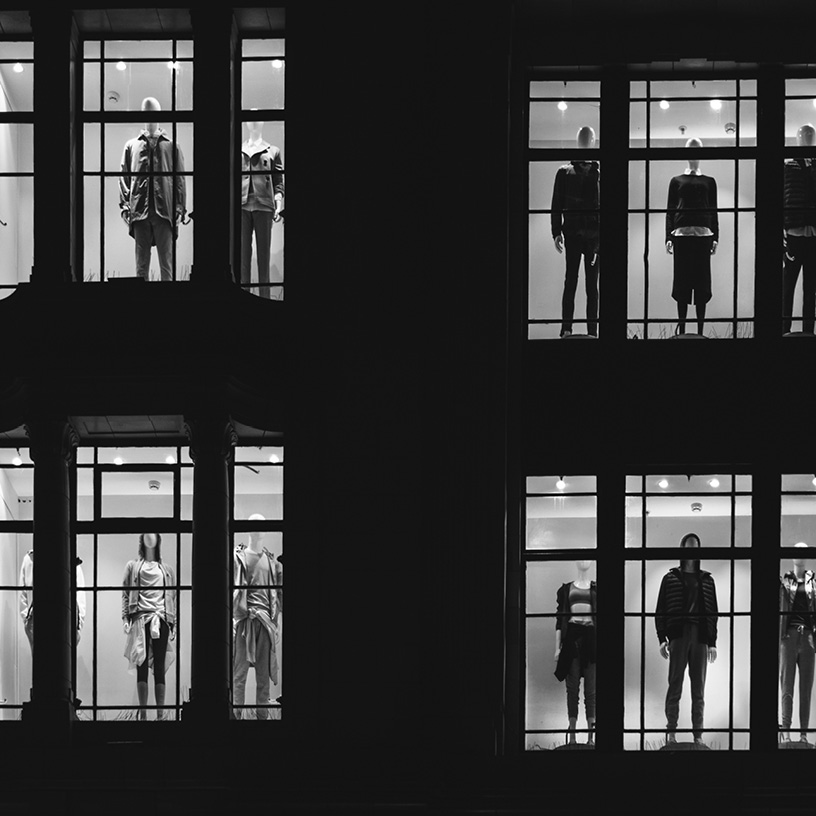We all share concerns about our environment and its sustainability but how we approach solutions to it vary. Conscious consumerism is one example. Are you a conscious consumer? Is going it alone the answer? Or, is working with a community the way forward? We investigate…

What is conscious consumerism?
Call it what you will – we, as the consumer, have a certain degree of power when it comes to where and how we spend our money (even the most unfocused of shopper makes subconscious choices). You may, for example, choose to flex your weight by refusing products that are made by large, immoral corporations or shun companies that test on animals.
Another option is to close your wallet and walk away. Waiting 10 seconds before you make a purchase gives you time to really think through your decision. It also allows you the time to consider if you already own something similar. Or if what you’re going to buy is going to make you happy. These choices certainly make us feel like we are making a difference, but are we?
Perhaps voting with your wallet isn’t always the answer? Some argue that putting all your eggs (free range, of course) in one basket results in you losing an opportunity to voice your concerns. How would you do that? Well, what about backing your local politician? The one who is trying to improve public transport or ban toxic chemicals being pumped into a nearby stream? If we are asking these questions perhaps we also need to question if, in our focus to consume consciously, we are spending wisely? In the US, it’s estimated that ‘green’ consumers spend over $9.32m on environmentally-focused cleaning products. What could one-third of that money do if it was donated to an environmentally-focused cause?
But what if your wallet or your voice is not enough? What would happen, say, if you were to vote with multiple wallets and a collection of voices? What if you got your whole street together and decided not to buy gas or electricity from a certain provider? Or the entire neighbourhood boycotted the local supermarket because of its shoddy recycling policy? There’s certainly power in numbers. Like all great ideas, all it takes is one individual to plant the seed…

Finding companies and projects that are doing the ‘right thing(s)’
While we, the consumers, are doing our part we can’t help but wonder what businesses are doing. And, if there are companies out there doing ‘the right things,’ how do we find them? The easiest way is to look at labelling – carefully. We’re all familiar with the recycling triangle image – this shows that the products/packaging is recycled, recyclable or made from renewable materials. You can also look out for a symbol that shows a product as cruelty-free or Fairtrade.
Many companies are offering consumers a double dose of goodness – environmentally sustainable products that also come with good trading policies. You can buy coffee that is planted and grown in the rich, fertile soil found under the shade of the Amazonian rainforest (rather than opting to chop it down and replant).
ORGANIC INDIA is another example. They have joined forces with their local producers, helping them to reverse environmental damage. By choosing to follow regenerative agriculture techniques, the soil, in which its plants are grown, is healthier than even usual organic standards. By reverting to simple and traditional farming methods, and without interfering with nature’s biodynamic rhythm, microorganisms within the soil are replenished. The farming techniques revert land back to its former richness and benefit the environment by reversing damage and absorbing emissions. Of course, these efforts form a bond between the company and the local people who produce the harvest. What’s good for the earth is also good for those who live on it. The farmers’ livelihoods are boosted by learning regenerative farming methodology and they receive certification which, in turn, increases their ability to produce and sell quality produce.
Oxfam Fairtrade is another popular choice for the conscious consumer. It sources products and crafts directly from makers – often in third world countries. This initiative, the products of which are sold in your local shopping mall, create employment, boost initiatives and ensure that craftsmen and women are paid a decent and in-line wage for their produce.
Communities coming together
Building communities from good causes has an almost tangible feel-good benefit. Take Veg Out in Melbourne. With Luna Park as its backdrop, the community garden is composed of over 140 different plots, with produce being sold (if it’s not eaten first) at St Kilda’s farmers’ market. In what must be one of the most sought-after investment locations it’s lettuce, cauli and friendships that grow rather than greedy multinationals.
Just like seeds, our children need help to grow up strong and with an understanding of how important it is to protect and help our planet. The Cultivating Community project, based in Sydney, takes this ethos into schools, helping children to design and grow their own patches and gardens. It not only teaches kids about healthy foods but about sustainability, protecting the environment and reducing rubbish by choosing to recycle and reuse.
Finally, let’s not brush over the feel-good factor that comes with being part of such communities. Even though the cause that brought you together may be negative, working with a diverse group of individuals, all striving towards the same outcome – is nothing but a positive experience. So, even if you’re not sure where you sit with voting with your wallet, choosing to get a little extra slice of happiness is a no-brainer. Get out there!

Michelle Hubbard is a UK-born writer living in (and loving) New Zealand. An experienced writer, Michelle has worked women’s monthly magazines such as Good Housekeeping and SHE and as a journalist for The London Evening Standard and New Woman’s websites. Additionally, she wrote her own parenting blog while living in the UK. Michelle qualified as a personal trainer in 2005. Although she no longer trains, she still participates in regular exercise such as CrossFit, Zumba, yoga and running.
You May Also Like...
JOIN OUR TRUE WELLNESS REVOLUTION
Subscribe to our newsletter for up-to-date news, new products and special offers. Be apart of our beautiful community inspiring True Wellness for all.




